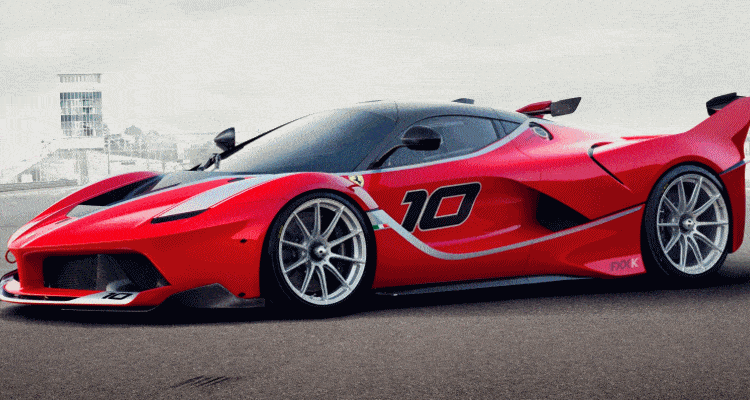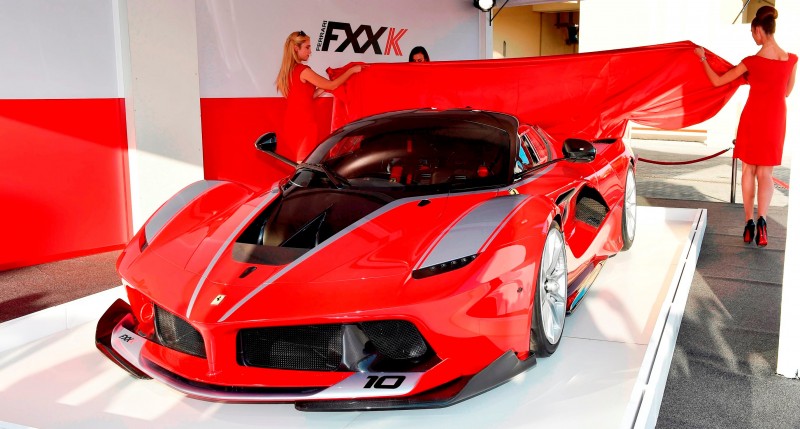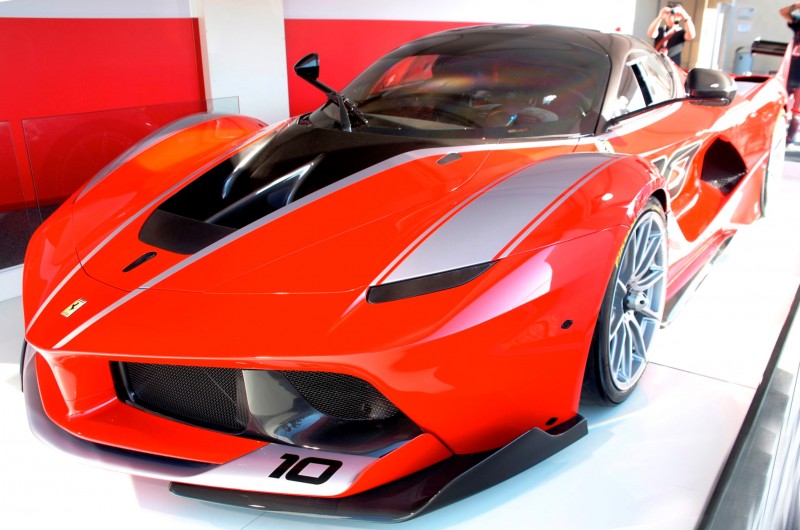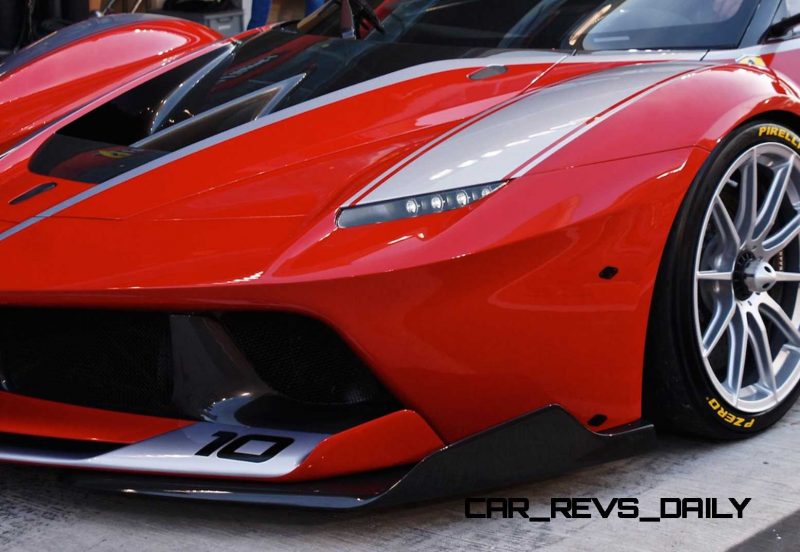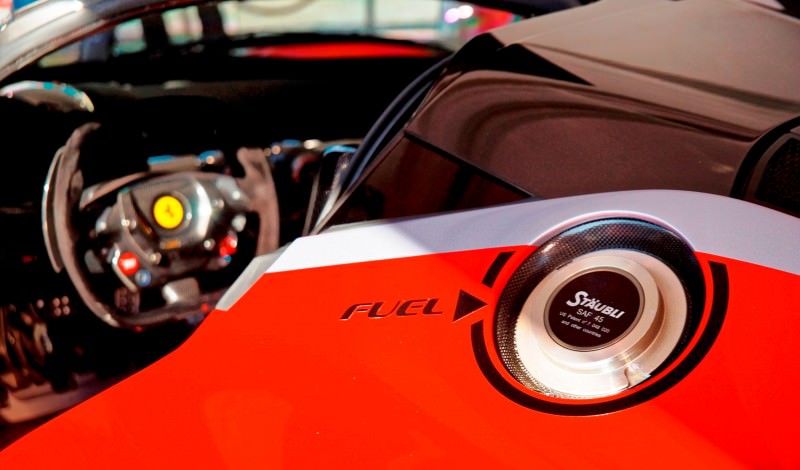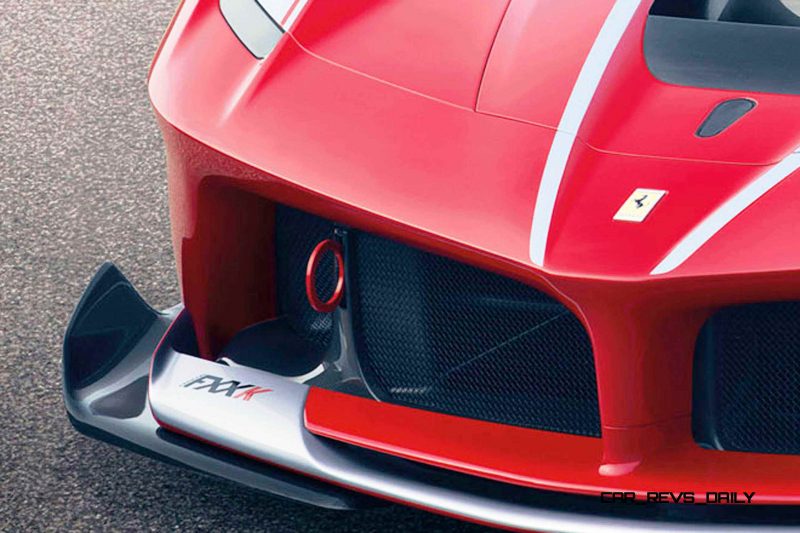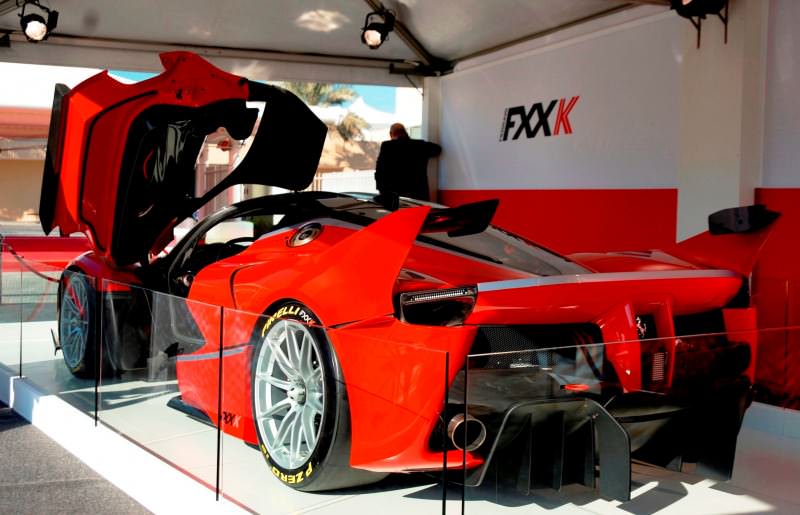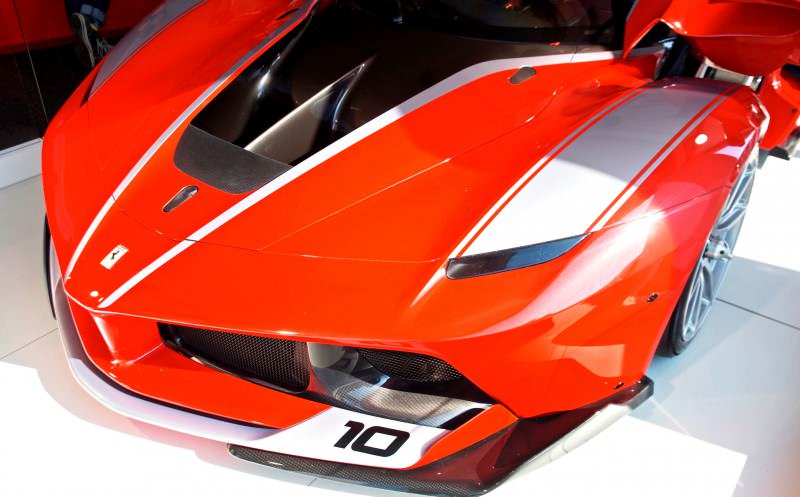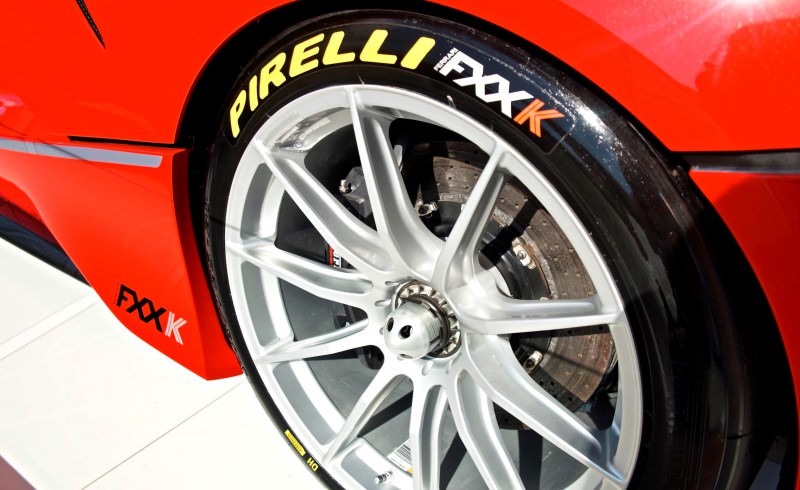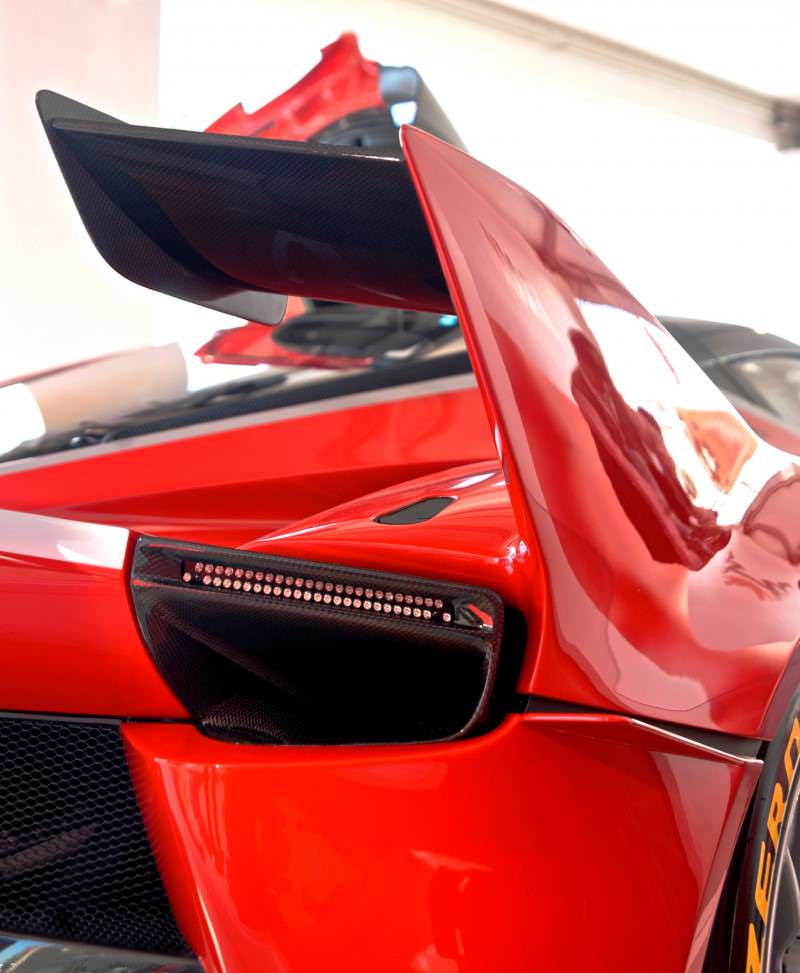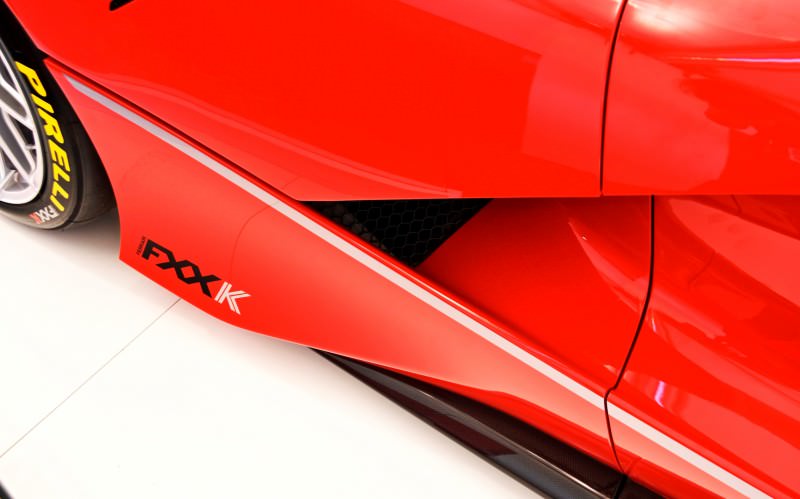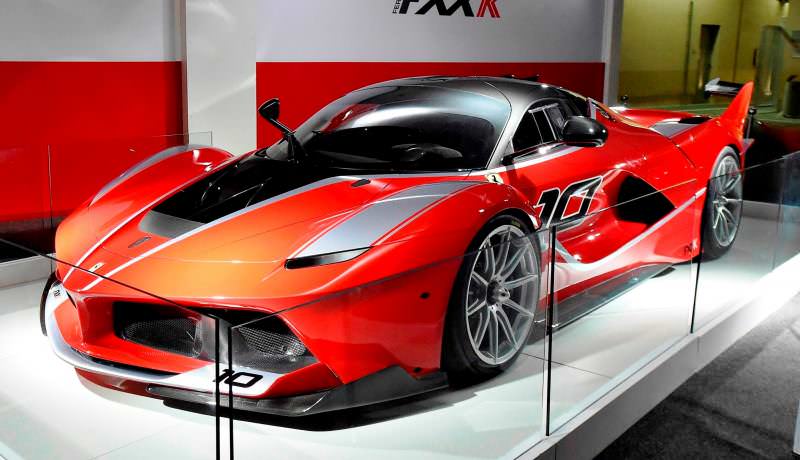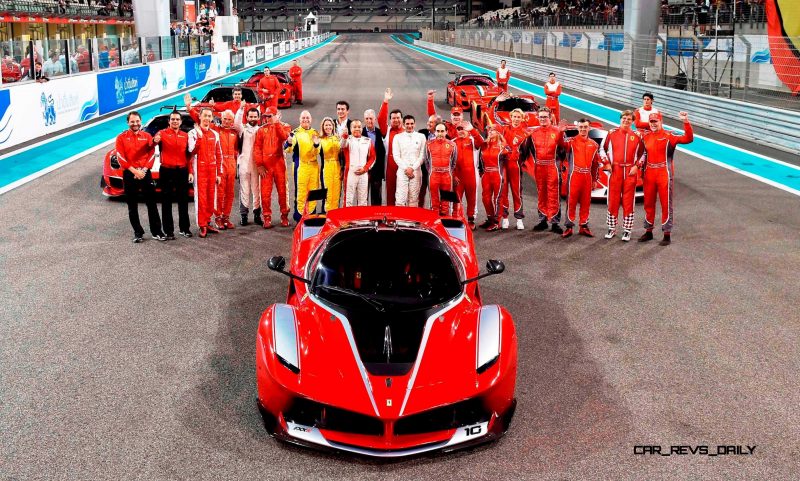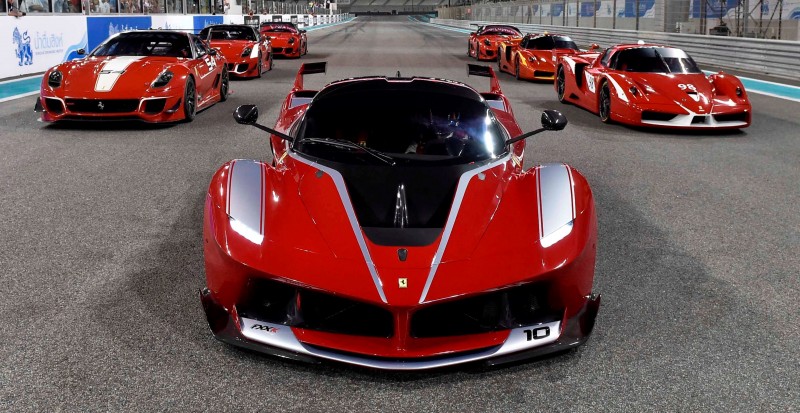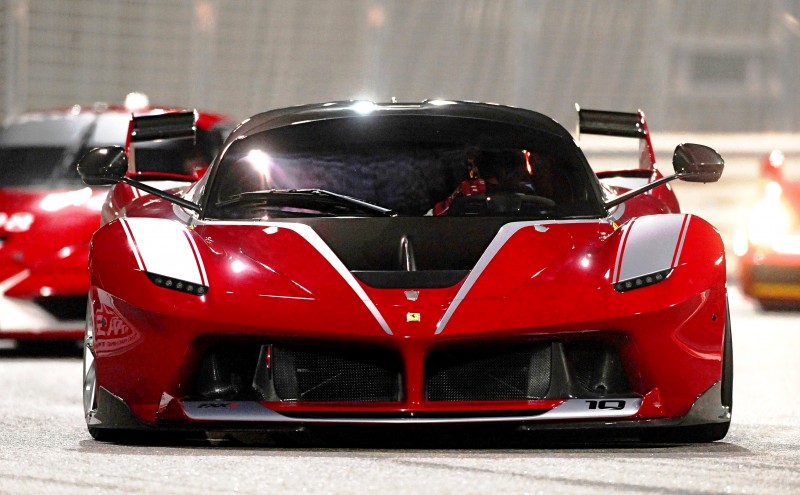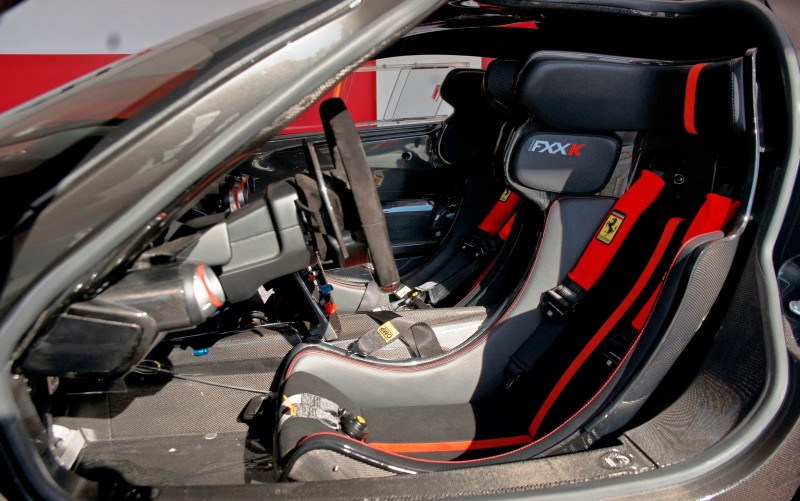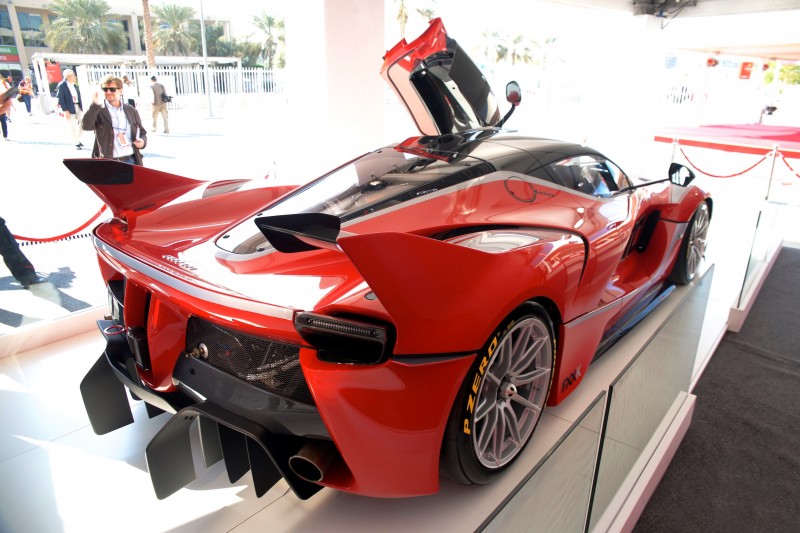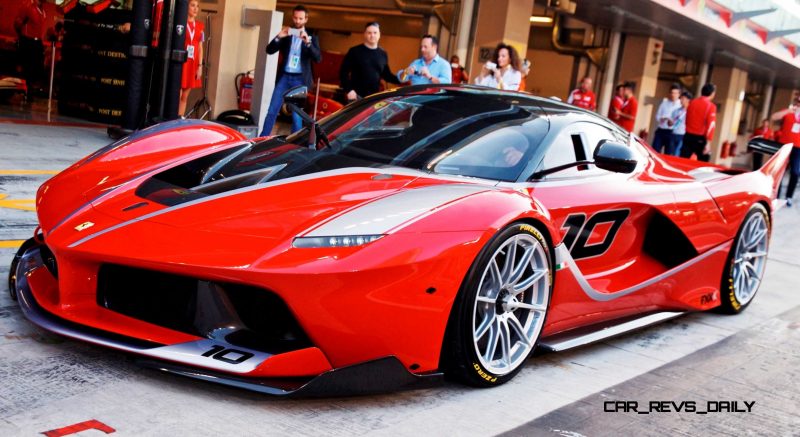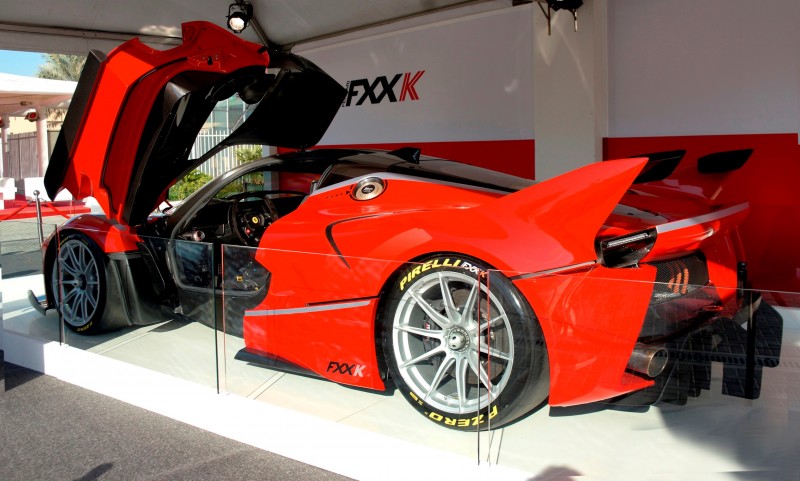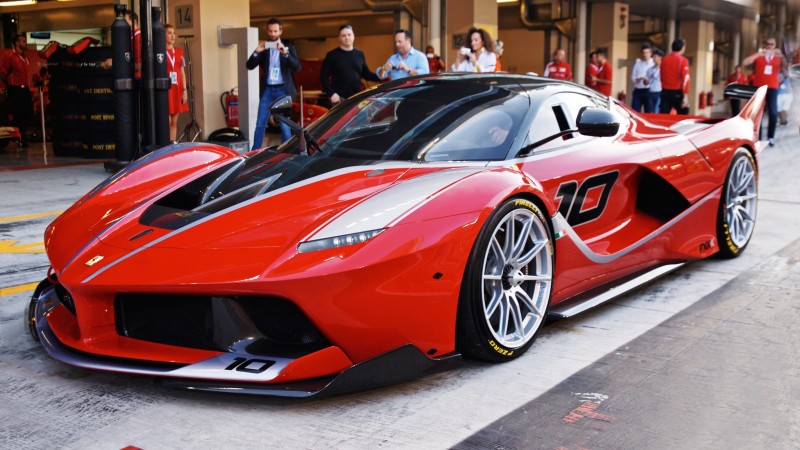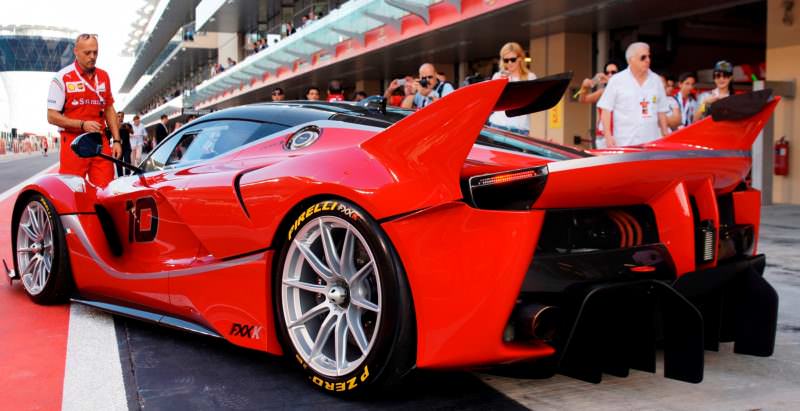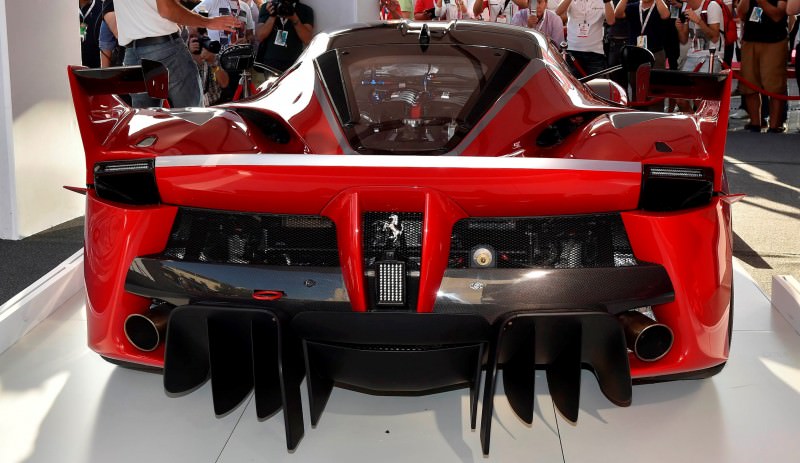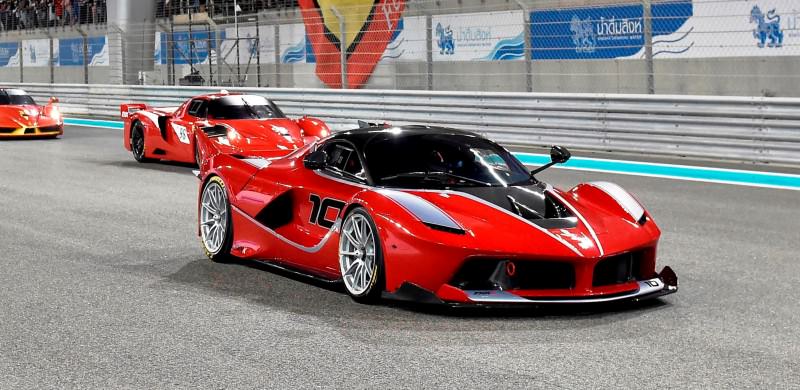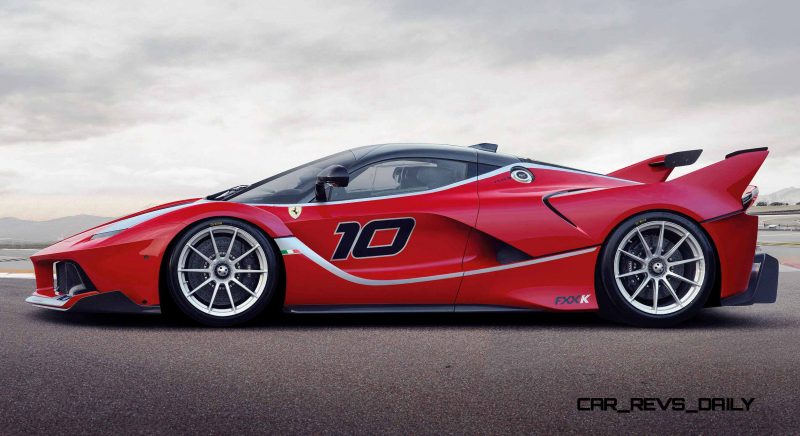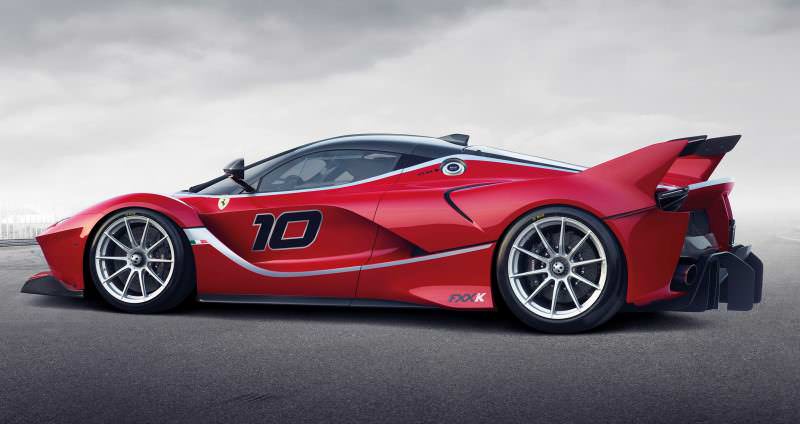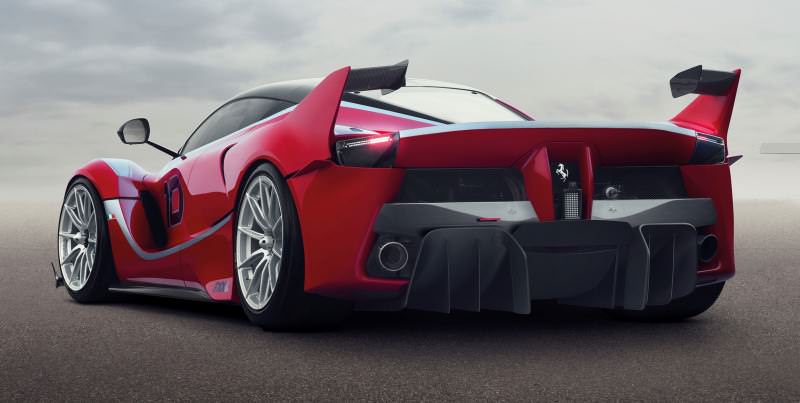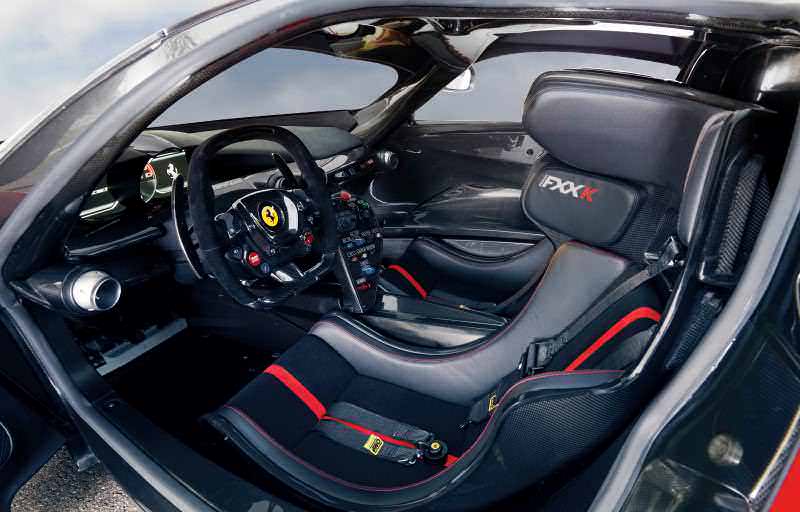 Thrilling news from Ferrari this morning! The new FXX K prototype has broken cover ahead of a public debut at Ferrari World next weekend in Abu Dhabi. Upgraded for hardcore track racing that may include the GT class of the Le Mans WEC championship, the FXX ditches all nods to road legality and comfort in its chase of pure speed.
Thrilling news from Ferrari this morning! The new FXX K prototype has broken cover ahead of a public debut at Ferrari World next weekend in Abu Dhabi. Upgraded for hardcore track racing that may include the GT class of the Le Mans WEC championship, the FXX ditches all nods to road legality and comfort in its chase of pure speed.
The overhaul is similar in theme to the McLaren P1 GTR but the FXX K is arguably even more extreme, more futuristic and perhaps more intoxicatingly changed versus the standard LaFerrari. This brings a totally new front end with extra downforce and active aero, along with a re-profiled bodyside and a wild new tail section. A giant set of rear wings forms a bit of an F40 throwback with tall horizontal stabilizer fins, but the two uprights only feature slight horizontal surfaces (for vertical stabilization) and leave the middle section free for max downforce and max slipperiness at ultra-Vmax speeds.
This means the FXX K will lack the active rear spoiler of the P1 GTR but may be more useful in actual racing series like the WEC that forbid such tech tricks.
The engine and HY-KERS system are suitably upgraded along with the bodywork, racing cockpit and competition slick tires and suspension.
Ferrari FXX K
WORLD PREMIERE OF THE FXX K AT THE FERRARI FINALI MONDIALI IN ABU DHABI
Maranello, 3rd December 2014 – Ferrari’s new FXX K research and development programme receives its world premiere next weekend at the Yas Marina Circuit in Abu Dhabi. The laboratory-car is based on Maranello’s first hybrid model and will grace the world’s tracks from next year onwards. The K in its moniker is a reference to the “KERS” kinetic energy recovery system it adopts in maximising its track performance.
Unfettered by homologation and racing regulations, the FXX K will never be used in competition. It was, in fact, developed to be completely uncompromising, incorporating technological innovations that will guarantee an unprecedented driving experience to the exclusive group of Client-Test Drivers with whom the Prancing Horse will roll out a test programme over the coming two years.
The car’s enormous potential is attested to by two significant figures: a total power output of 1050 cv (860 cv delivered by its conventional V12 engine and 190 by its electric motor) and maximum torque in excess of 900 Nm.
The FXX K’s 6262 cc V12 features new camshafts and a modified valve train with mechanical rather than hydraulic tappets. The intake manifolds have been redesigned and given a special type of polishing treatment. The exhaust system has been modified as its silencers have been eliminated.
The HY-KERS system has been evolved specifically for pure performance with the result that the driver can control the function logics from the specific 4-setting Manettino on the centre console: Qualify, for maximum performance within a limited number of laps; Long Run to optimise performance consistency; Manual Boost for instant maximum torque delivery; and Fast Charge, for a fast recharge of the car’s battery. 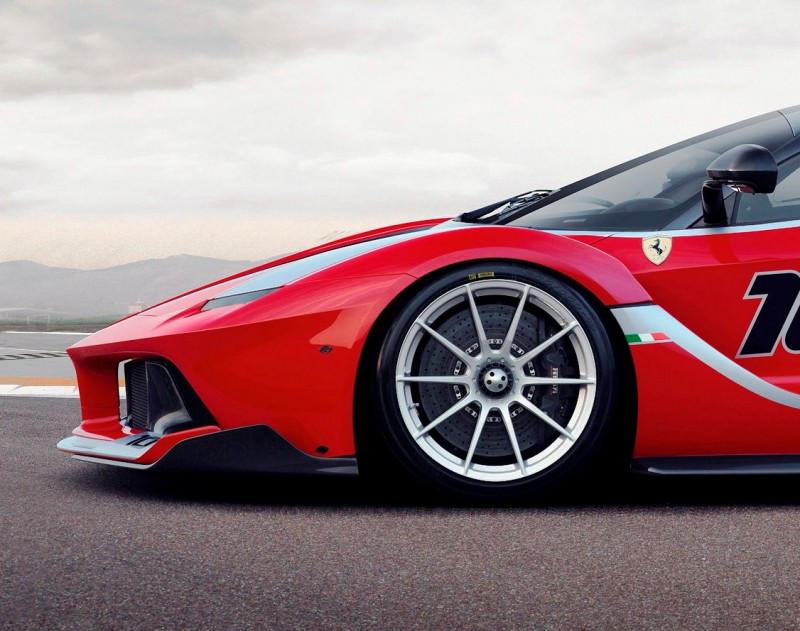
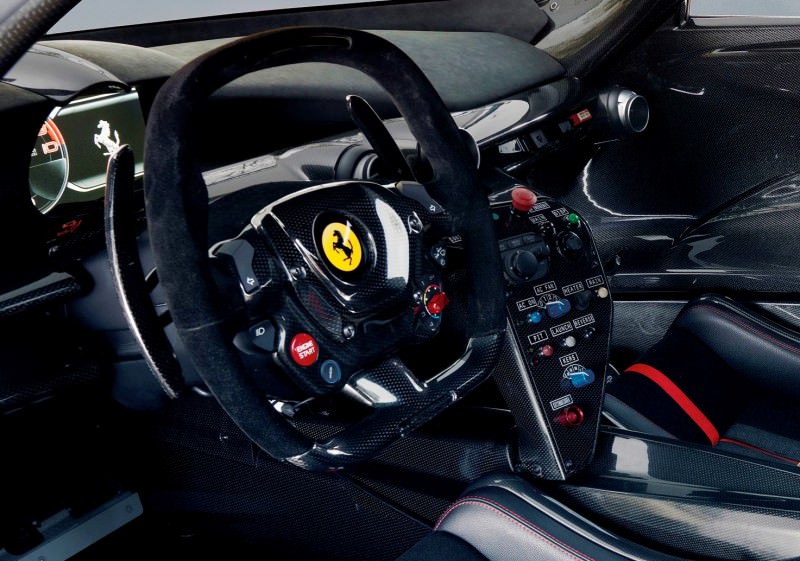
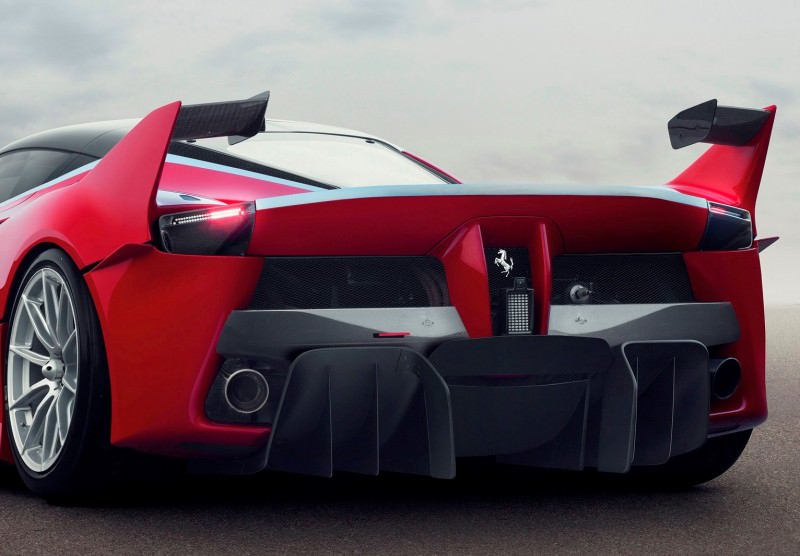
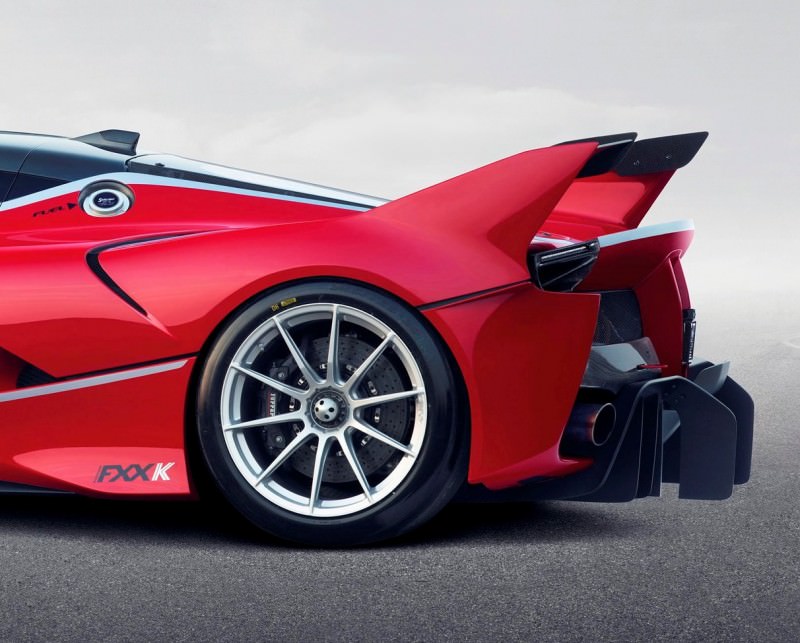
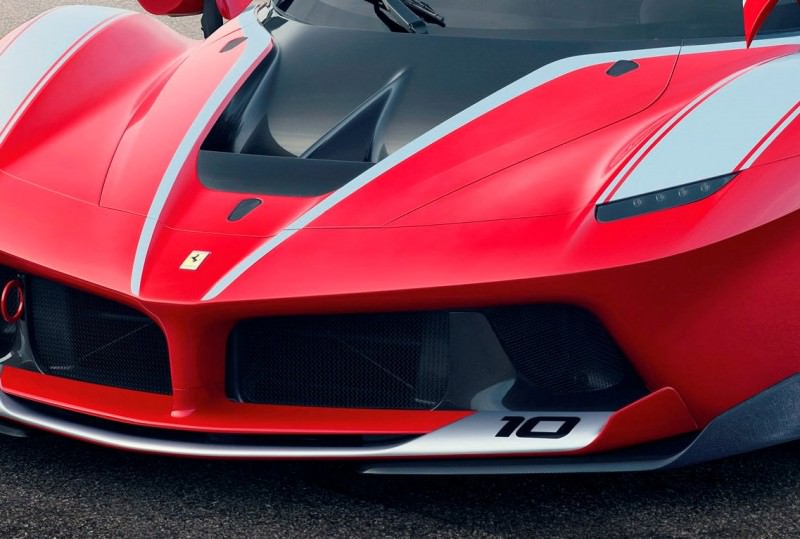
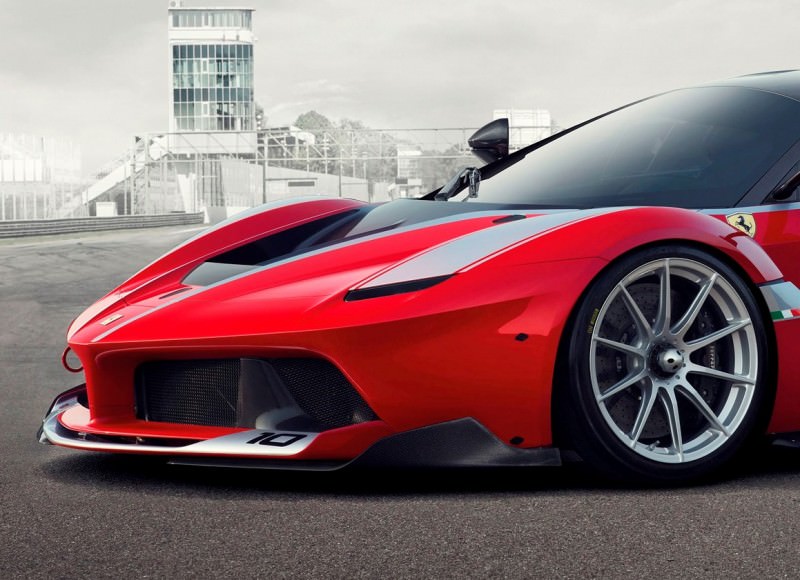
A focus on delivering maximum efficiency at every stage of every track lap has resulted in extensive but integrated work on the entire car body in terms of both active and passive aerodynamics.
The front of the car is dominated by a twin-profile spoiler and a larger splitter, which is 30 mm lower, with a gap in its centre. This design is an application of the concepts developed to improve aero balance in the GT category of the WEC, which Ferrari has won for three consecutive years. Two pairs of vertical elements, an endplate and, externally, a dive plane, together with vertical fins channel the air towards the car’s flanks, generating a longitudinal vortex that creates a localised depression. This in turn sucks the wake from the wheels to the outside of the aerodynamic underbody. Along with the side skirts that extend out from the sills, the vortex helps isolate the airflow from the underbody to boost its efficiency.
The solutions on the rear of the car are highly sophisticated, too. The tail section is now higher and the mobile spoiler extends further for a total increase in extension of 60mm when fully deployed. A vertical fin and a small wing each side of the tail act as guide vanes in the low drag configuration and boost the spoiler’s efficiency in the high downforce one. This system also creates considerable downforce at the rear of the car, allowing the use of an extreme diffusion volume for the rear diffuser which optimises air extraction from the underbody. The section of the flat underbody just ahead of the rear wheels is also exploited to the full to generate downforce thanks to the reduced pressure in the wheel arch guaranteed by the direct connection to the rear of the car by a by-pass duct.
The result is a 50% improvement in downforce in the low drag configuration and a 30% improvement in the more aggressive downforce configuration, resulting in a figure of 540 kg at 200 km/h.
Vehicle dynamics are further improved by the adoption of Pirelli slicks complete with sensors that monitor longitudinal, lateral and radial acceleration, as well as temperature and pressure. This ensures an accurate analysis of the interaction between the tyre and track surface, providing even more vital data to enable the traction control system to guarantee maximum performance.
The intervention level of the E-Diff electronic differential, F1-Trac traction control, Racing SSC (Side Slip Angle Control) – now specially calibrated to suit the car’s slick tyres – and the high-performance ABS can be controlled using the five-position Manettino on the steering wheel.
Text and images can be downloaded from the media site: www.media.ferrari.com
For further information:
Ferrari Press Office
tel. 0536 949 337 – fax 0536 949 049
E-mail: media@ferrari.com
www.ferrari.com
TECHNICAL SPECIFICATIONS
FXX K
KERS system
| Total maximum power | 1050 cv |
| Total maximum torque | >900 Nm |
| V12 maximum power* | 860 cv @ 9200 rpm |
| Maximum revs | 9250 rpm |
| V12 maximum torque | 750 Nm @ 6500 rpm |
| Electric motor output | 140 Kw (190 cv) |
ICE
| Type | 65-deg. V12 |
| Bore and stroke | 94 x 75.2 mm |
| Total displacement | 6262 cc |
| Specific power | 137 cv/l |
Dimensions
| Length | 4896 mm |
| Width | 2051 mm |
| Height | 1116 mm |
| Wheelbase | 2650 mm |
Gearbox
| 7-speed DCT |
Suspension
| Front | double wishbones |
| Rear | multi-link |
Tyres (Pirelli P-Zero slicks with sensors)
| Front | 285/650 – R19 x10.5 |
| Rear | 345/725 – R20x13 |
Carbon ceramic brakes (Brembo)
| Front | 398 x 223 x 36 mm |
| Rear | 380 x 253 x 34 mm |
Electronic controls
| ESC | stability control |
| High perf ABS/EBD | Performance anti-lock system/electronic brake balance |
| EF1-Trac | F1 electronic traction control integrated with the hybrid system |
| E-Diff 3 | third generation electronic differential |
| SCM-E Frs | magnetorheological damping with twin solenoids (Al-Ni tube) |
| Aerodynamics | active |

Tom Burkart is the founder and managing editor of Car-Revs-Daily.com, an innovative and rapidly-expanding automotive news magazine.
He holds a Journalism JBA degree from the University of Wisconsin – Madison. Tom currently resides in Charleston, South Carolina with his two amazing dogs, Drake and Tank.
Mr. Burkart is available for all questions and concerns by email Tom(at)car-revs-daily.com.



